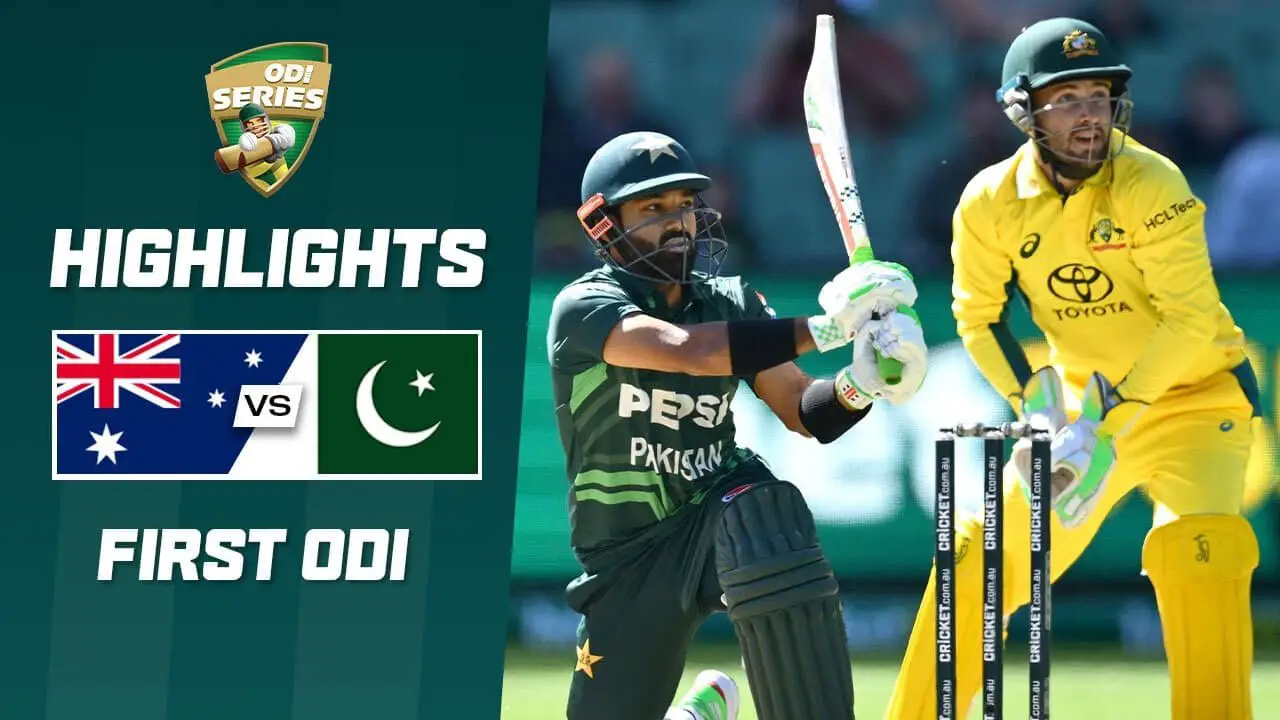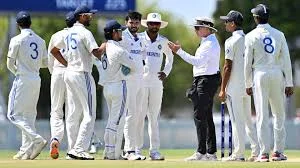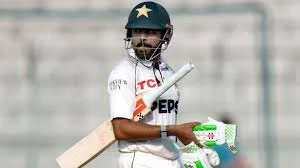In the three-match ODI series of Australia vs Pakistan in the opening game, Australia clinched a dramatic two-wicket victory over Pakistan at the Melbourne Cricket Ground on November 4, 2024.
Both teams showcased impressive skill, keeping fans on edge until the final overs. Australia’s resilience, aided by key performances from Mitchell Starc and Pat Cummins, ensured a successful chase of Pakistan’s modest target of 203.
This nail-biting finish underscored Australia’s formidable home advantage and set the stage for an exciting series.
Pakistan’s Innings: Early Wickets and Middle-Order Stability
After losing the toss, Pakistan was sent into bat and faced a tough start on a challenging MCG pitch. Australia’s pace spearhead, Mitchell Starc, struck early, claiming the wickets of both openers, Saim Ayub and Abdullah Shafique, within the first seven overs.
Starc’s accuracy and ability to extract bounce from the pitch rattled Pakistan, putting them at a precarious 24/.
The responsibility fell to Pakistan’s captain, Mohammad Rizwan, and star batsman Babar Azam. Babar showed glimpses of his classic form with a composed 37, holding one end steady before falling to Australia’s spinner Adam Zampa.
Rizwan, however, took on a more aggressive role, managing to score 44, the highest individual score of the innings, as he sought to push Pakistan closer to a defendable total. Unfortunately, the rest of Pakistan’s batting line-up struggled to provide substantial support.
Despite some contributions from the lower order, Pakistan was bowled out for 203 runs in 46.4 overs.
Starc’s remarkable bowling performance (3 for 33) was instrumental in stifling Pakistan’s scoring rate. His early breakthroughs, coupled with Pat Cummins’ disciplined bowling and Zampa’s spin, kept Pakistan under constant pressure.
Cummins and Zampa each took two wickets, maintaining a tight leash on Pakistan’s run rate, ensuring a manageable chase for the Australian side.
Australia’s Chase: Early Setbacks and Cummins’ Resilience
Chasing a target of 204, Australia encountered immediate obstacles, losing openers Matthew Short and Jake Fraser-McGurk cheaply. With the score at 13/2, the pressure mounted on Australia’s middle order.
Steve Smith and wicketkeeper-batsman Josh Inglis formed a crucial partnership, helping Australia stabilize their innings. Smith contributed a solid 44 runs, anchoring one end before falling to Pakistan pacer Haris Rauf.
Inglis, who scored 49, came close to a half-century before he too was dismissed, leaving Australia at 113/3. His dismissal sparked a mini-collapse as the middle order crumbled, with key players like Marnus Labuschagne, Glenn Maxwell, and Aaron Hardie failing to make substantial contributions. As wickets tumbled, Australia found themselves at 155/7, teetering on the brink of defeat.
Pat Cummins, however, stepped up under pressure, showcasing both composure and skill. Coming in at a tense moment, Cummins played a vital knock, scoring 32 off 31 balls, which included some crucial boundaries to keep the scoreboard ticking.
His calm approach in the high-pressure situation, aided by lower-order contributions from Sean Abbott, pushed Australia closer to the target. Despite Pakistan’s efforts to take quick wickets, Cummins’ resilience ultimately carried Australia to victory, with Australia reaching 204/8 in 33.3 overs.
Key Performances and Turning Points
Mitchell Starc’s performance was a standout, with his lethal opening spell and key wickets making a significant impact on the game. For his three-wicket haul, Starc was awarded Player of the Match. His ability to swing the ball and generate pace was a decisive factor in restricting Pakistan’s batting lineup.
Starc’s performance underscored his role as a premier fast bowler for Australia, especially in high-stakes matches.
Pat Cummins’ batting heroics were equally crucial, exemplifying his versatility and composure under pressure. Cummins’ game-winning innings highlighted his leadership and cricketing acumen, helping Australia escape a precarious position.
His ability to handle high-pressure situations has become a trademark of his career, making him a valuable asset for Australia in all formats of the game.
For Pakistan, Haris Rauf’s fiery spell stood out, as he managed to claim key wickets and disrupt Australia’s chase. Although his efforts ultimately fell short, Rauf’s bowling was a testament to Pakistan’s strong pace attack, keeping the game competitive until the last few overs.
Captain’s Remarks and Looking Ahead
After the match, Australian captain Pat Cummins praised his team’s performance but acknowledged that the game got closer than anticipated. He highlighted the contributions of Starc and the bowling unit, which set up the foundation for the win.
Pakistan’s captain, Mohammad Rizwan, commended his team’s fighting spirit, especially their efforts in defending a low total, while also noting areas for improvement in batting. He expressed optimism about bouncing back in the remaining games of the series.
With Australia now leading 1-0, the series moves to Adelaide for the second ODI on November 8. This close contest has set the tone for a highly competitive series, with both teams eager to refine their strategies and make necessary adjustments.
Pakistan will look to strengthen their batting approach, aiming for a more resilient start, while Australia will work on securing more consistent partnerships to avoid the middle-order collapses seen in the first ODI.
Conclusion
The first ODI between Australia and Pakistan provided an exhilarating start to the series, with Australia’s narrow two-wicket victory showcasing thrilling cricket from both sides.
As the teams prepare for the next match, fans can expect another intense battle, with Pakistan looking to level the series and Australia aiming to secure a series win on home soil.
This initial encounter at the MCG reminded spectators of the unpredictable nature of ODI cricket, where each game can be decided by a few key performances or a single clutch moment.
Stay connected with us 🙂
Australia vs Pakistan
Pak vs Aus Score Card








One thought on “Australia vs Pakistan, 1st ODI Match Summary”